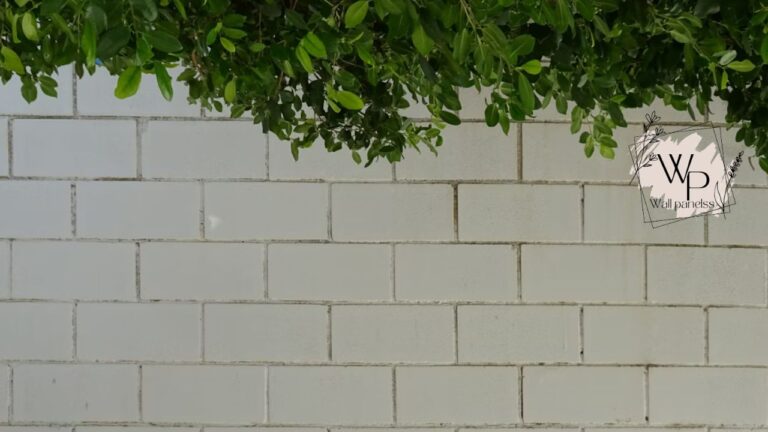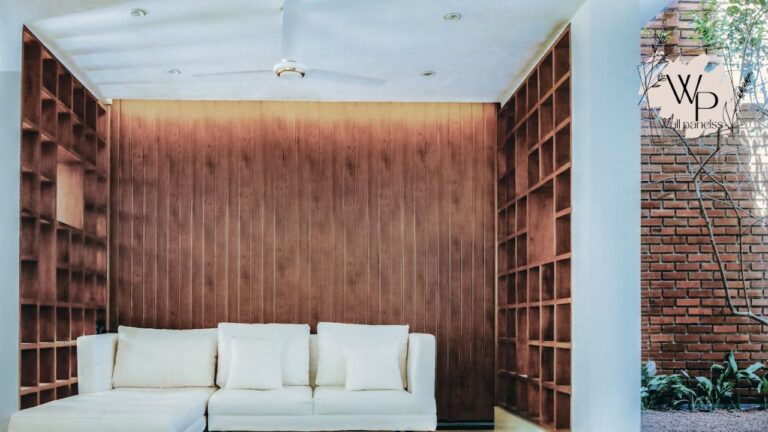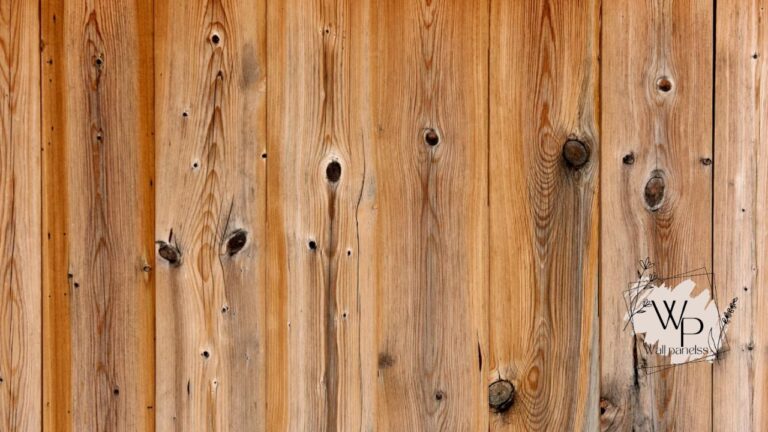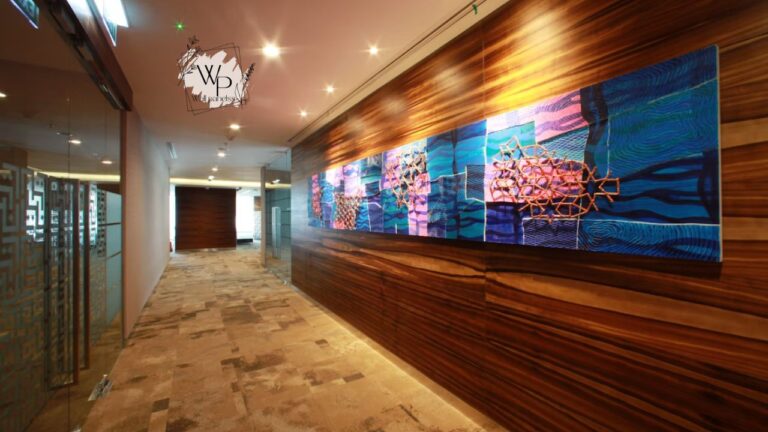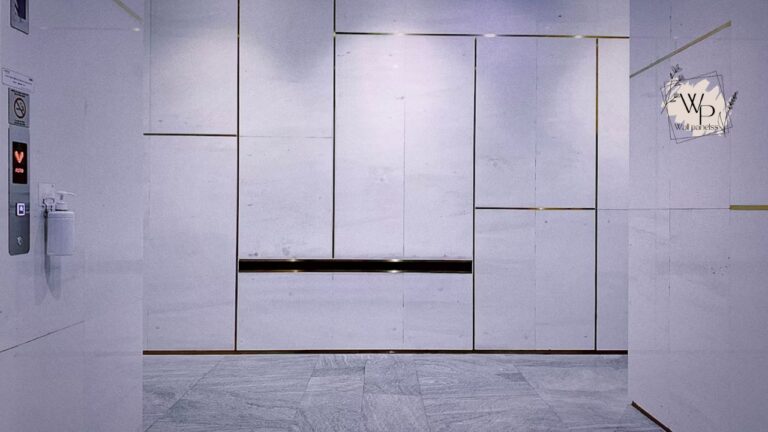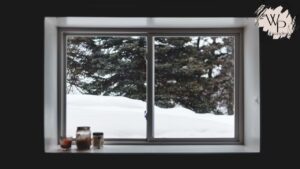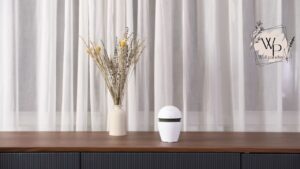Tired of staring at flat, boring walls? You’re not alone. Many homeowners are rediscovering the warmth and character that wood wall paneling brings to a space. This isn’t your grandparent’s dark, gloomy basement from the 70s. Modern wood paneling is versatile, sophisticated, and can transform any room from ordinary to extraordinary.
Whether you’re aiming for a rustic farmhouse vibe, a sleek modern aesthetic, or a cozy Scandinavian retreat, there’s a wood wall paneling option that fits your vision. It adds texture, depth, and a natural element that paint simply cannot replicate. This guide will walk you through everything you need to know, from types and costs to installation and maintenance, helping you make a truly informed decision for your home.
Wood Wall Paneling at a Glance
| Feature | Description |
|---|---|
| Material Types | Solid wood (Pine, Oak, Walnut, Cedar), MDF, Plywood, Reclaimed Wood, Veneer |
| Average Cost | $10 – $50 per square foot (materials + installation) |
| Key Benefits | Durability, aesthetic appeal, improved insulation, sound dampening, increased home value |
| Popular Styles | Shiplap, Board and Batten, Beadboard, Tongue and Groove, Flat Panels |
| Installation Level | DIY-friendly to professional, depending on the type and complexity |
| Maintenance | Regular dusting, occasional cleaning with wood-safe products, refinishing as needed |
Why Choose Wood Wall Paneling? The Enduring Appeal
The comeback of wood wall paneling is no surprise. It offers a unique blend of practical benefits and powerful aesthetic impact that few other wall coverings can match. It’s an investment that pays dividends in both daily enjoyment and long-term property value.
Boosting Your Home’s Aesthetic
The most immediate benefit is the stunning visual transformation. A single accent wall covered in rich walnut or weathered reclaimed wood can become the focal point of a room, creating a sense of luxury and intention. It introduces texture and organic patterns that make a space feel more grounded and connected to nature.
One homeowner, Sarah from Austin, shared her experience: “We added shiplap wood wall paneling to our living room, and it completely changed the feel of the house. It went from a generic new-build to a home with personality. We get compliments on it every time someone visits.” This is a common sentiment; the right paneling can truly make a house feel like a home.
Durability That Lasts Generations
Unlike drywall, which is prone to dents, scratches, and scuffs, solid wood paneling is incredibly resilient. It can withstand the daily wear and tear of a busy household, making it an excellent choice for high-traffic areas like hallways, entryways, and family rooms.
With proper care, high-quality wood wall paneling can last for decades, even centuries. Think of historic homes with original woodwork still intact; that’s the kind of longevity you can expect. This durability means less time and money spent on repairs and repainting down the line.
Practical Perks: Insulation and Sound Dampening
Wood is a natural insulator. Adding a layer of wood paneling to your walls can help regulate your home’s temperature, keeping it warmer in the winter and cooler in the summer. This can lead to tangible savings on your energy bills over time.
Furthermore, wood has excellent acoustic properties. It absorbs sound waves rather than reflecting them, which helps to reduce echo and ambient noise. This makes wood wall paneling a fantastic choice for home offices, media rooms, or bedrooms, creating a quieter and more peaceful environment.
Exploring the Different Types of Wood Wall Paneling
The term “wood wall paneling” covers a wide array of materials and styles. Understanding the differences is key to choosing the perfect option for your budget, style, and installation comfort level.
Solid Wood: The Authentic Choice
Solid wood is the premium option, prized for its authenticity, beauty, and durability. Each plank is a single piece of real wood, showcasing unique grain patterns and natural imperfections.
Common Solid Wood Varieties
- Pine: A popular and affordable choice. Its light color and prominent knots are perfect for rustic, farmhouse, or Scandinavian designs. It’s a softwood, so it can be more susceptible to dents, but it takes paint and stain beautifully.
- Oak: Known for its strength and distinct, wavy grain. Oak offers a traditional and timeless look, available in red and white varieties. It’s a hardwood, making it very durable and resistant to wear.
- Walnut: A luxurious hardwood with a deep, rich chocolate color and a smooth, straight grain. Walnut wood wall paneling creates a sophisticated and dramatic effect, ideal for modern or mid-century modern spaces.
- Cedar: Famous for its pleasant aroma and natural resistance to rot and insects. Its reddish-brown tones and knotty appearance make it perfect for creating a cozy, cabin-like feel.
Engineered Wood Options: Versatility and Value
Engineered wood products offer the look of wood at a more accessible price point. They are constructed from wood fibers, particles, or thin veneers, making them stable and less prone to warping than solid wood.
MDF (Medium-Density Fiberboard)
MDF panels are made from compressed wood fibers and resin. They are incredibly smooth, with no grain or knots, making them an ideal base for paint. Many decorative styles, like beadboard or raised panels, are available in MDF. While not as durable as solid wood, they are a cost-effective way to achieve a specific look.
- User Review: “I used MDF beadboard for my bathroom wainscoting. It was easy to cut and install, and once painted, it looked fantastic. For the price, you can’t beat it.” – Mark L., 4.5/5 stars.
Plywood
Plywood consists of thin layers of wood veneer glued together. It’s strong, stable, and more affordable than solid wood. High-grade plywood can be stained to show off its wood grain, offering a clean, modern aesthetic. It’s a versatile material for creating large, flat panels.
Wood Veneer
Veneer paneling features a very thin slice of real hardwood bonded to a less expensive core, like MDF or plywood. This gives you the authentic look and grain of an exotic or premium wood (like teak or zebrawood) without the hefty price tag of a solid plank. It’s a fantastic compromise between budget and high-end aesthetics.
Reclaimed Wood: A Story in Every Plank
For a truly unique and sustainable option, nothing beats reclaimed wood. Sourced from old barns, factories, and warehouses, this wood carries a rich history. Each plank is marked by time, with nail holes, saw marks, and a weathered patina that cannot be replicated.
Using reclaimed wood wall paneling adds instant character and a powerful narrative to your space. It’s an eco-friendly choice that diverts materials from landfills. The look is perfect for industrial, rustic, or eclectic designs.
Popular Styles of Wood Wall Paneling
Beyond the material itself, the style or profile of the paneling defines the overall look. Here are some of the most popular designs making waves in interior design today.
Shiplap: Modern Farmhouse Icon
Shiplap has become a design superstar, largely thanks to its association with the modern farmhouse aesthetic. It consists of horizontal boards with a special rabbet joint that creates a subtle gap between each plank. This creates clean, distinctive lines that add texture without overwhelming a room.
Originally used for waterproofing ships and barns, today’s shiplap is all about style. It can be installed horizontally for a classic look or vertically to make ceilings feel higher. Painted crisp white, it feels fresh and airy; stained or left natural, it feels warm and rustic.
Board and Batten: Classic and Customizable
Board and batten is a traditional style that involves placing wide boards on the wall and covering the seams with thin vertical strips called battens. This creates a geometric, grid-like pattern with a charming, dimensional quality.
The style is incredibly versatile. You can vary the spacing of the battens for a wide or narrow pattern. It can be used as wainscoting on the lower third of a wall or cover the entire surface for a more dramatic effect. Board and batten adds a touch of architectural interest that feels both classic and current.
Tongue and Groove: A Seamless Finish
Tongue and groove panels fit together perfectly, with a protruding “tongue” on one edge and a corresponding “groove” on the other. This interlocking system creates a smooth, continuous surface with very tight, clean seams.
This style is often used for ceilings and walls where a seamless look is desired. The tight fit also adds strength and stability to the installation. Tongue and groove wood wall paneling is a timeless choice that works well in both traditional and contemporary homes, offering a polished and refined finish.
Beadboard: Charming and Traditional
Beadboard is a type of tongue and groove paneling characterized by a series of long, vertical grooves, or “beads,” milled into the surface. It evokes a charming, cottage or coastal feel and is often used for wainscoting in bathrooms, kitchens, and mudrooms.
Its classic design adds texture and a hint of nostalgia. While traditionally painted white, modern interpretations see it in bold colors like navy or charcoal gray for a contemporary twist. Beadboard is a relatively easy and affordable way to add architectural detail to a room.
The Cost Factor: Budgeting for Your Project
The cost of wood wall paneling can vary dramatically based on the material, style, and whether you hire a professional or do it yourself.
Material Costs
- MDF & Basic Pine: $2 – $7 per square foot. These are the most budget-friendly options, perfect for paint-grade projects.
- Mid-Range Woods (Oak, Cedar): $8 – $20 per square foot. This range offers greater durability and more distinctive grain patterns.
- Premium & Reclaimed Woods (Walnut, Teak, Antique): $20 – $40+ per square foot. These high-end materials offer unparalleled beauty, character, and uniqueness.
Installation Costs
If you choose to hire a professional, expect to pay between $4 and $10 per square foot for labor. The cost will depend on the complexity of the job, the type of paneling, and your geographic location. A simple shiplap accent wall will be less expensive to install than intricate board and batten covering an entire room with windows and outlets.
For a DIY project, your main costs will be the materials and tools. You’ll need a saw, level, nail gun, measuring tape, and finishing supplies. While DIY saves on labor costs, be sure to account for potential mistakes and the value of your time.
Installation Guide: DIY or Hire a Pro?
Deciding whether to install wood wall paneling yourself is a big decision. Some styles are quite DIY-friendly, while others are best left to the experts.
When to DIY
If you have some basic carpentry skills and the right tools, you can likely tackle a shiplap or tongue and groove accent wall. These styles are relatively straightforward.
Basic DIY Installation Steps:
- Preparation: Clear the wall and remove any outlet covers or trim. Repair any significant damage to the drywall. It’s also wise to paint the wall a dark color that matches your wood, which helps hide any small gaps.
- Locate Studs: Use a stud finder to locate and mark the wall studs. This is where you will nail the panels for a secure hold.
- First Plank: Start at the top or bottom of the wall (depending on the style). Use a level to ensure the first plank is perfectly straight. An unlevel first board will throw off the entire wall.
- Cutting and Nailing: Measure and cut each plank to fit. For shiplap or tongue and groove, nail through the lip of the board into the studs, so the next plank hides the nails.
- Finishing: Cut around outlets and windows as you go. Once all planks are installed, re-install your trim and outlet covers. Fill any visible nail holes and apply your desired finish (stain, paint, or sealant).
When to Hire a Professional
Consider hiring a professional if:
- The project is complex (e.g., floor-to-ceiling board and batten, intricate patterns).
- You’re working with very expensive materials where mistakes would be costly.
- The walls are uneven, or the room has many angles and obstacles.
- You lack the time, tools, or confidence to achieve a flawless finish.
A professional will ensure the job is done quickly, correctly, and with a polished result that enhances your home’s value.
Maintenance and Care: Keeping Your Walls Beautiful
One of the great things about wood wall paneling is that it’s relatively low maintenance. A little care goes a long way in preserving its beauty.
Routine Cleaning
For most types of paneling, a regular dusting with a microfiber cloth is all that’s needed to keep it looking fresh. For a deeper clean, you can use a cloth slightly dampened with water or a wood-safe cleaning solution. Always dry the surface immediately to prevent moisture damage.
Avoid using harsh chemical cleaners, abrasive sponges, or excessive water, as these can strip the finish and damage the wood.
Handling Scratches and Dents
For minor scratches on stained or natural wood, a touch-up marker or wood filler crayon in a matching color can work wonders. Deeper gouges might require a bit of light sanding and reapplication of the finish.
For painted paneling, simply touch up the scratch with the original paint color. Dents in softwoods like pine can sometimes be steamed out using a damp cloth and a hot iron, but test this method in an inconspicuous area first.
Inspiring Ideas for Every Room
Still not sure how to incorporate wood wall paneling into your home? Here are some ideas to get your creative juices flowing.
The Living Room Accent Wall
Create a dramatic focal point behind your sofa or television. A wall of dark walnut adds a moody, sophisticated vibe, while light-colored reclaimed wood can create a bright and airy coastal feel. This single feature can define the entire room’s design scheme.
The Cozy Bedroom Headboard
Instead of a traditional headboard, extend wood wall paneling from the floor to the ceiling behind your bed. This creates a built-in, architectural feature that makes the room feel more custom and luxurious. Soft pine or warm oak can make the space feel like a cozy retreat.
The Durable Mudroom and Hallway
High-traffic areas benefit from the durability of wood paneling. A wainscoting of beadboard or board and batten on the lower half of the wall can protect it from scuffs, bags, and muddy boots while adding classic charm.
The Unexpected Ceiling
Don’t forget to look up! Applying lightweight tongue and groove paneling to a flat ceiling can add incredible warmth and architectural interest. It’s an unexpected touch that draws the eye upward and makes a room feel complete, especially in spaces with high ceilings.
Conclusion: Embrace the Power of Wood
Wood wall paneling has successfully shed its dated reputation to become a hallmark of thoughtful, high-end interior design. It offers an unparalleled combination of beauty, durability, and practicality that can elevate any room in your home.
From the clean lines of shiplap to the historic charm of reclaimed barnwood, there is a style and material to suit every taste and budget. By investing in wood wall paneling, you are not just covering a wall; you are adding character, texture, and a timeless natural element that will bring you joy for years to come. It’s a design choice that is both a bold statement and a comforting embrace.
Frequently Asked Questions (FAQs)
Is wood wall paneling still in style?
Absolutely. Modern wood wall paneling is a major design trend, but its roots are classic, giving it timeless appeal. The focus today is on using it as an architectural feature, with styles like shiplap, board and batten, and sleek flat panels leading the way.
Does wood wall paneling add value to a home?
Yes, it can. When done well, it is seen as a high-end upgrade that adds character and custom appeal, which can be a significant selling point. Its durability is also a practical advantage that buyers appreciate.
Can I install wood wall paneling in a bathroom?
You can, but with caution. It’s crucial to choose a moisture-resistant material like cedar or a properly sealed engineered wood like MDF. You must also ensure the room is well-ventilated to prevent moisture buildup, which can cause wood to warp or mold. It’s best to keep it away from direct water spray, like inside a shower.
What is the easiest type of wood paneling to install for a beginner?
Shiplap is often considered one of the most DIY-friendly options. The overlapping joints are forgiving, and installation is fairly straightforward. Peel-and-stick wood plank products are even easier, though they may not offer the same longevity as traditional paneling.
How do I clean wood wall paneling?
For regular maintenance, simply dust with a dry or slightly damp microfiber cloth. For stickier spots, use a pH-neutral cleaner designed for wood. Always test cleaners in a hidden spot first and avoid soaking the wood with water.
Admin Recommendation
WallPanel Home Assistant Idle: The Ultimate Guide to Smart Home Displays


